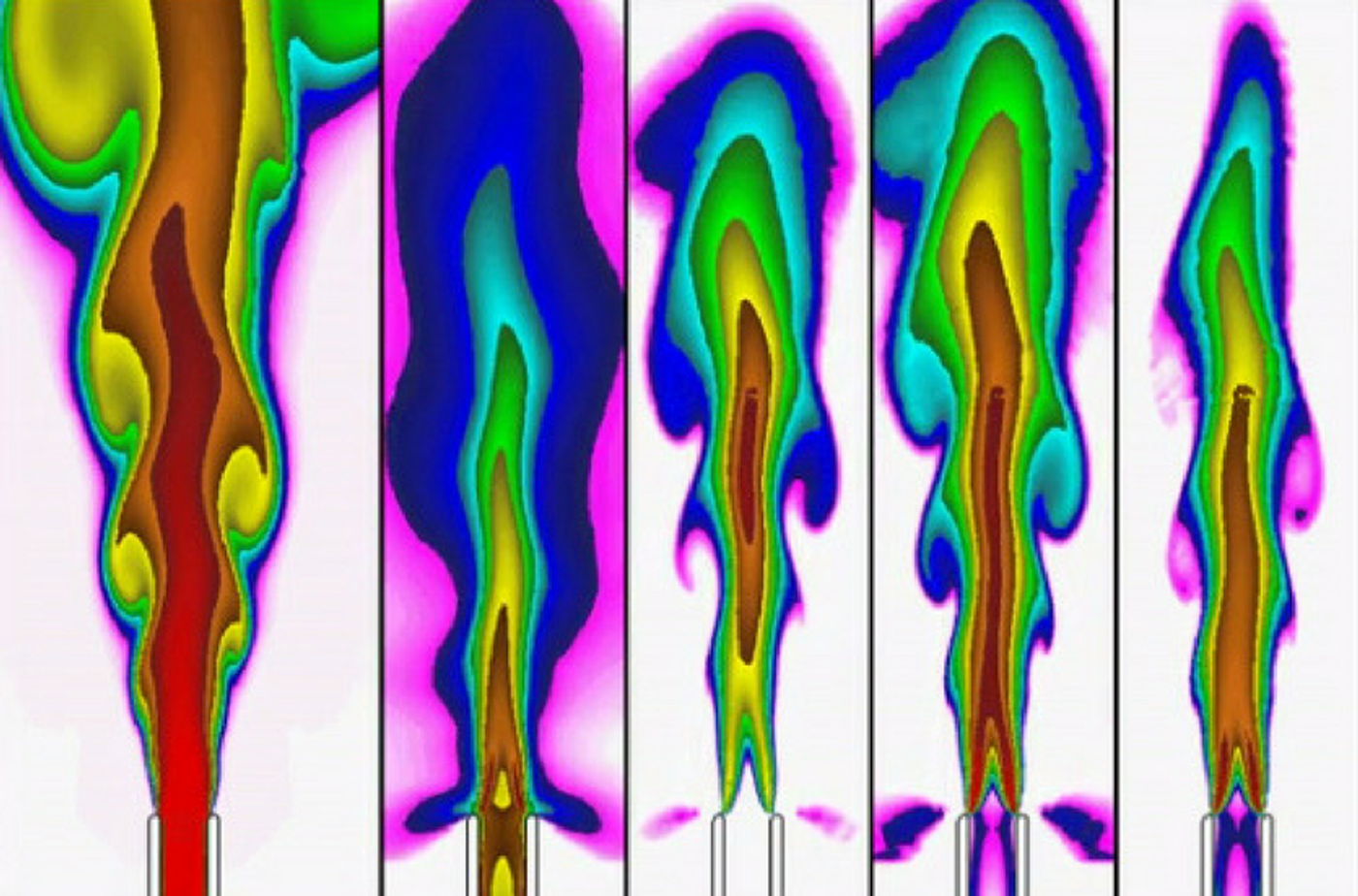Plasma Medicine - Research Sheds Light On The Cause of Turbulence
The low-temperature atmospheric pressure plasma jet in action. Credit: Amanda Lietz
Plasma, the fourth state of matter, is an ionized gas containing positive and negative ions or electrons. Nowadays various types of plasmas are used in different applications, from welding and vehicle exhaust cleanup to fighter jet engines and fusion reactors.
Plasma medicine is an emerging field that explores the potential of low temperature (upper limit of 50 °C) atmospheric plasma in clinical practice. This specific plasma uses helium as the gas source and produces chemically reactive species such as hydroxyl and nitric-oxide molecules. It can be useful in biomedical applications such as sterilization, disinfection and cancer therapy because the radicals can tear into the cellular structure of bacteria and cancer tissues. But there is often turbulence within the plasma jets - variance in flow direction and velocity. Ideally, in an application such as sterilization or therapy, a steady flow of plasma can guarantee predictable amount of radicals for the needed application. But turbulence in plasma would fail consistency.
For a long time, the cause of the turbulence remains unknown. Now, according to the new research published on the journal Applied Physics Letters, it could be caused by heat-induced sound waves generated at the plasma electrodes. By simulating the plasma jets, they discovered that the localized heating at the tip of the electrode (whose electric field ionizes gas) occurs on the time scale of the voltage pulse from 10 to 100 nano-second. The heat intensified the movement of gas molecules and created vibration (a propagating sound wave) which travels along with the stream. When the wave front reached the boundary of the electrode, where the plasma hit the air, it disrupted the plasma layer and caused turbulence.
The researchers hope that by figuring out how and where the turbulence occurs, they may be able to develop methods to control it and create a more consistent plasma-delivering device for medical applications. “Now that this phenomenon is relatively understood, researchers can enhance or dampen this effect, depending on what's best for the patient. Ultimately, this new analysis can lead to an approved and reliable treatment”, said Dr. Mark J. Kushner from the University of Michigan and the supervising author of the report.
Source: phys.org/Applied Physics Letters









